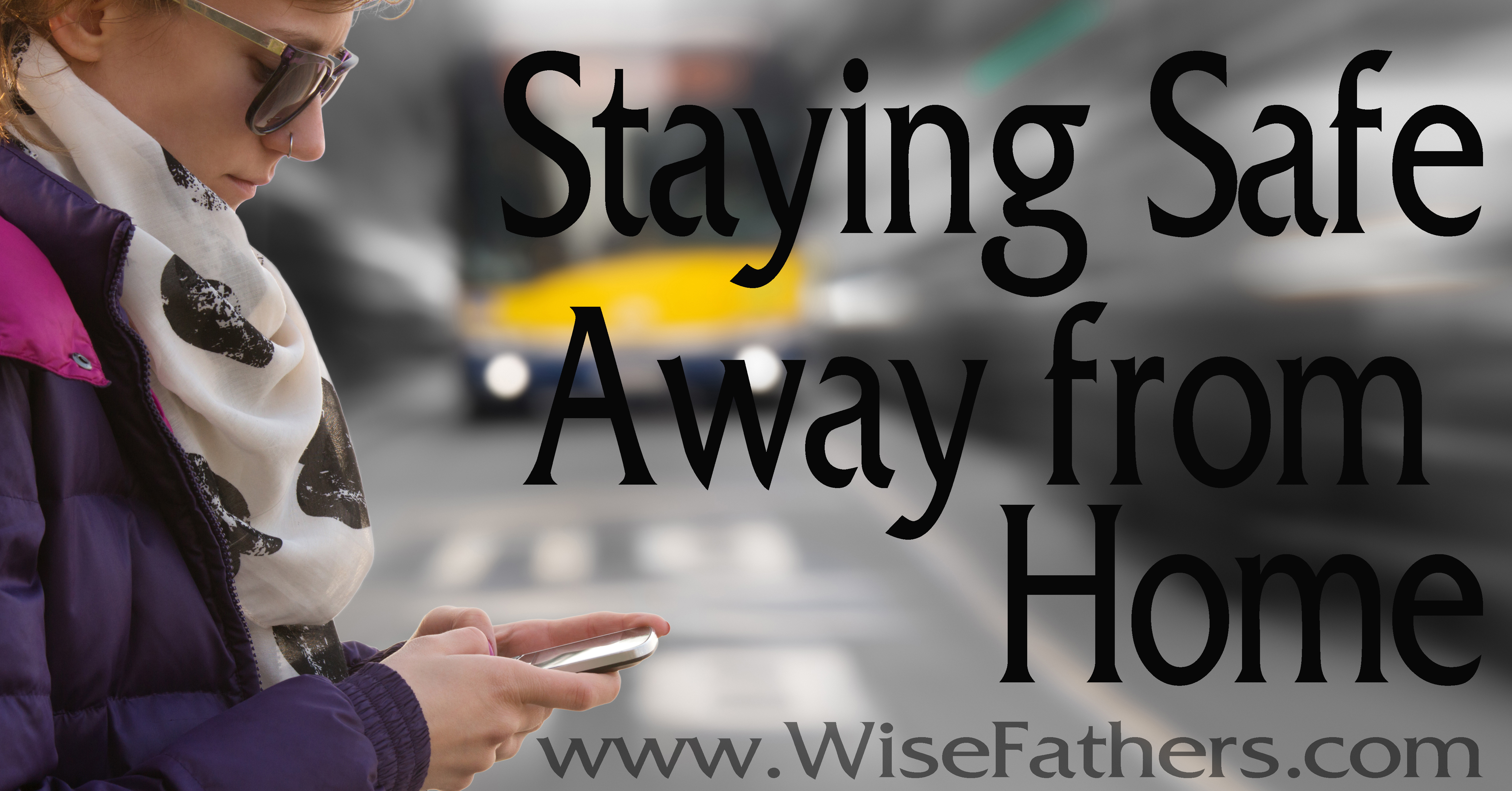
Staying Safe Away From Home
Simply being aware of where you are and how to get to safety in an emergency is an incredibly important, but overlooked, life skill for adults and kids. The most basic advice is also the simplest: Put down the electronics and observe where you are wherever you are traveling. Again, to be clear, turn off the electronics and watch the road and your surroundings. It’s critical for staying safe, and it’s the foundation of location awareness.
Stay Together
This seems obvious, but emphasize to your kids the importance of staying with their group (family, friends, school, work, etc.). If the group splits up, the person in charge must know where everyone is going and be OK with it. If they do split up, they need to know when and where the group is regrouping and have something with which to tell time. That’s the one that always gets my kids because they don’t have cell phones. They should also write that down. If they aren’t there for the meet-up, they could miss fun activities or even a ride home, or cause others to miss activities, and that’s just extremely rude.
If they are separated, do your kids know who to ask for help/how to find help? Of course if they carry a cell phone, it’s charged and they have a signal, they can call you, a friend, a chaperone, or someone else for help. But what if they don’t? They could ask building security, but an even better idea is to look for a mom and ask for help. Moms are very likely to make sure they get somewhere they can find more help and to wait, at least a few minutes, to be sure they are, in fact, getting the help they need. If there are actual police around, they may also be a good choice. (You know the how reputable your own police force is – some are better than others.)
In a Building
Do you ever point out the door(s) near the movie screen, off to one or both sides, to your kids when you go see a movie? Those are emergency exit doors, and most buildings have them somewhere. (It’s the law.) In an emergency, use them. That is what they are for. Since they usually have automatic alarms attached to them, don’t use them unless it is an emergency.
Sometimes, building owners are afraid people will sneak in through those exit doors, or sneak out without paying their bill, so they lock or chain them shut so no one inside can open them. This is extremely illegal and dangerous. If you see that, tell someone in charge. If they do not fix it immediately, report the incident to your local police dispatch (not 911) so they can follow up to be sure it is fixed. The article Deadliest Public Assembly and Nightclub Fires shows exactly why it is so very dangerous, and needs to be reported and fixed immediately.
Be aware of the nearest exit, and the next-nearest, and anything that might block your way or be a danger in an emergency. If there is a large glass-filled area, that could become very dangerous in an earthquake, tornado, or other natural disaster.
In a Vehicle
It is impossible to be aware of your location if you entire focus is on a tablet, phone, or other electronic device, kid or adult. Even if it’s not electronic, if your focus is on knitting, reading, talking, or napping when you aren’t the driver, you will not be aware of your location. Put down your devices and encourage your kids to look out the window and notice what’s there along with you. Make a game of it! Who can spot the funniest sign? Who can find the biggest artwork? Can anyone find a red door? That sort of challenge.
- Street and route signs.
- Odd intersections and turns.
- Building names.
- Unusual stores. Gas stations are not unusual. A two-story gas station with a two-story gas pump outside it would be unusual.
- Artwork, including murals on buildings and statues.
- Roadwork, including detours and closed roads that might impact your return trip.
- Areas where the traffic is moving slowly or “stacking up” because it might be better to avoid those areas on your return trip.
Large Groups
Notice how any larger groups of people behave and help your kids learn to pay attention, too.
- If they are all moving in one direction, odds are good that roads in that direction will soon be blocked for a while.
- If fists are being raised in the air and people are starting to shout, it might be dangerous in mere minutes. Leave quickly and don’t come back that day.
- If the group is getting larger and larger (more people joining and walking toward it), then avoid the area when you leave. Even if it isn’t dangerous, it will be very crowded.
- If the crowd is dispersing (people leaving in all directions), it will probably be OK to come back through shortly.
Use this information to stay safe.
Walking
When walking or in a complex of buildings such as a large shopping center or a school campus, pay attention to where you are, including landmarks, so you know how to get back to where you started. Point out landmarks to your kids and have them help you find those on the way back. As they get older/better at this, have them start choosing the landmarks and then guiding your family back.
- Do you pass any odd looking buildings or statues?
- Is there any artwork, including graffiti, that stands out?
- Where are ponds, streams, or other water features?
- Are there any areas that make you feel unsafe, including alleys or places with a large group of people?
- Where are there “trap points”?
- Where are there maps to help you find your way? (Malls, mass transit, and other places often have posted maps with “you are here” noted.)
If there are paper or electronic maps to help find your way, it’s a good idea to pick one up. In addition to finding your way there and back, you may find other spots listed that you want to visit. The same goes for maps of any buildings you visit. Museums, in particular, have them. (That’s how I found the Ice Cream Parlor in the Smithsonian Museum of American History, before they closed it.)
Once you arrive at a location, pay attention to where you are within the building or buildings. Point out the bathrooms and water fountains to your kids? If you get separated does everyone know when and where to meet up? If the lights go out, can you or your kids find your way out? How can you find others in your group? Most buildings have emergency lighting, but the faster you can move, the less likely you are to be trapped in a group of panicked people.
None of this is complicated, and it’s as low-tech as it is possible to get, but making these skills a habit can help keep your family safe. It’s never to late to get started on skills like these, so why not start today? What other suggestions do you have for staying safe away from home?
